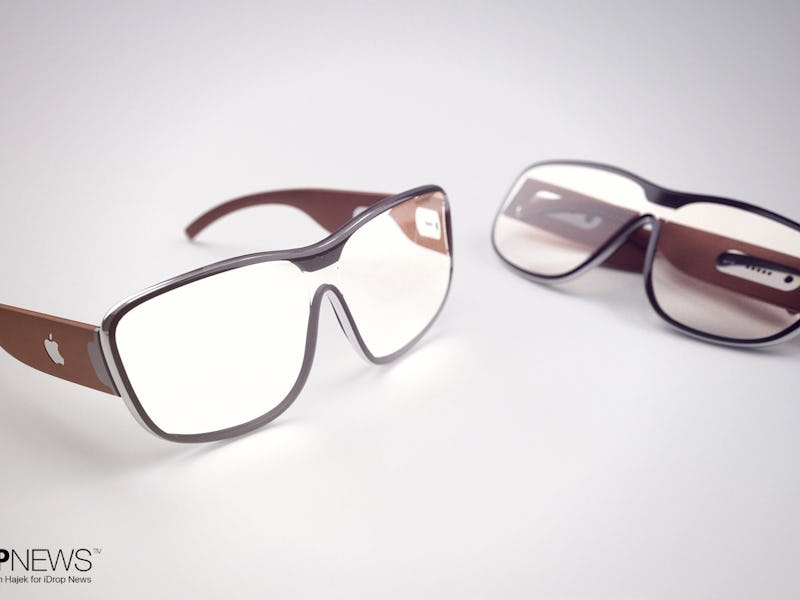Apple AR Glasses: Patent Hints at New Features for the Sensor-Stacked Specs
Apple's reported glasses could be more than just luxury tech.

Apple is reportedly looking to expand its line of wearables to include a pair of augmented reality-capable smart glasses. The secretive device is expected to launch by 2020, and will allow users to interact with holograms. Dozens of use cases seem likely, from more effortless visual guides that superimpose themselves on an unfamiliar street or recipe, to tools that enable safer driving. But a newly published patent hinted at another defining feature the future wearable might come with.
It looks like Apple’s AR glasses could come absolutely chock full of biometric and light sensors to track detailed face movements and anatomical gestures. Apple’s engineering team described using this data to track habits — just like how the current generation Apple Watch can track health data while you exercise — but also to enable gesture controls for a “head mounted display.” The patent was published by the United States Patent & Trademark Office and reported by Patently Apple on Thursday.
Apple’s filing states its glasses will be able to track “chewing, blinking, winking, smiling, eyebrow raising, jaw motioning, mouth opening, and head gestures.” Tracking this kind of data could be particularly useful for helping users get a handle on nervous habits, like clenching their jaw out of stress or biting their finger nails. But this many sensors could also help wearers interact with holograms more naturally.
All that extra biometric information could enable a number of cool applications. Users could tilt their head to the right to move through a holographic photo album, say, or wink when they want the glasses to take a picture with an on-board camera. This is more than yet another attempt to market its wearables as health tools, this patent could lay the foundation for how future Apple AR glasses users will interact with their devices, and open the door to even more imaginative features that are specifically tailored to this new type of device.
Apple analyst Ming-Chi Kuo, predicted that the spectacles will go into production as early as the end of 2019 and that it will use the iPhone’s computational power to render images, crunch data, connect to the internet, and tap into locational services. If the initial launch is successful, it could jump start a new line of Apple headgear.
The patent goes on to state that its array of sensors and gesture trackers could be used in a myriad of other settings including “reading glasses, sunglasses, athletic goggles, welding goggles, and helmets.” This woudl all align with what CEO Tim Cook told CNBC about his vision for how Apple can lead the push to merge consumer health services with cutting-edge technology.
“I believe, if you zoom out into the future, and you look back, and you ask the question, ‘What was Apple’s greatest contribution to mankind?’ it will be about health,” he said.
With the Apple Watch Series 4, Apple seemed to be beginning this shift from smartwatches that are viewed as an example of luxury tech toward being a more health-focused gadget that includes a medical-grade ECG heart monitor. The anticipated 2020 AirPods 2 update is also expected include biometric sensors to make them more into a health-centric audio tool.
Apple AR glasses could fit perfectly into Apple’s future health plans to complement their smartwatch and wireless earbuds. But these biometric sensors will also do a lot more than remind you that it would be a good idea to stop biting your nails.